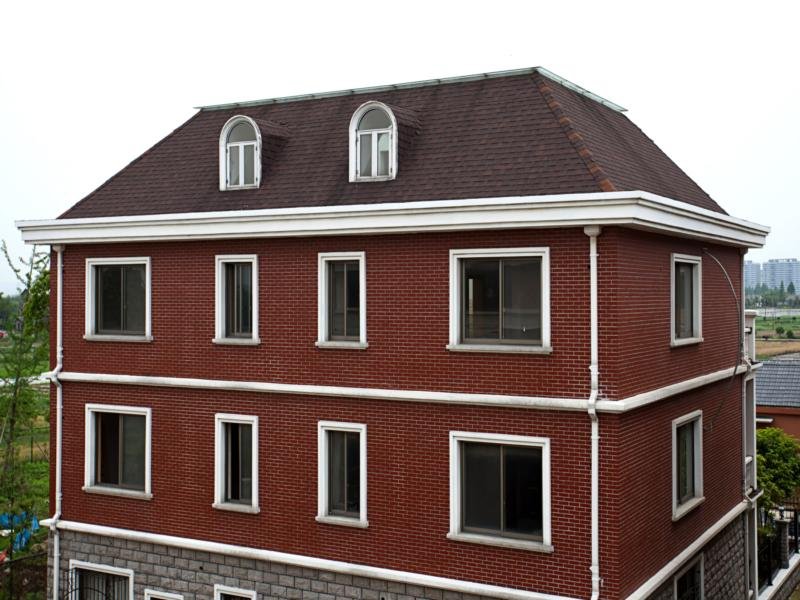Double-layer asphalt shingles build upon the foundation of single-layer asphalt shingles by adding an extra layer of thickness. The exposed surface is twice as thick as a single-layer shingle, while the covered portion retains the standard single-layer thickness. This innovative design, still called asphalt shingles, enhances the aesthetic and functional qualities of traditional shingles. Double-layer asphalt shingles inherit the core benefits of single-layer shingles while offering a superior sense of depth and heft, making them highly favored in the market. They boast improved resistance to aging, weathering, and water, resulting in a significantly longer lifespan.
The manufacturing process for double-layer shingles is notably more complex than for single-layer ones. Before the advent of automated double-layer composite technology, these shingles were manually laminated, which significantly increased production costs and led to batch inconsistencies. The introduction of automated composite technology has resolved batch variation issues and greatly reduced labor costs, ensuring consistent quality.

Applications of Double-Layer Asphalt Shingles
Double-layer asphalt shingles perform reliably on roof slopes ranging from 20 to 60 degrees. However, their suitability decreases on steeper slopes due to their increased weight compared to single-layer shingles. The downward tensile force on steeper slopes demands greater fixing strength. While six nails are generally sufficient for securing double-layer shingles over short distances, on roofs with slopes exceeding 60 degrees, the fixing strength may be inadequate. In high-wind areas, this can result in the entire roof being lifted or damaged.
Installation Considerations
- Roof Surface Preparation: Always inspect the roof’s flatness before installation. Concrete roofs, in particular, require careful attention, as uneven surfaces are less common with wooden roofs. A flatter roof ensures stronger adhesion of the asphalt adhesive, enhancing the shingles’ stability.
- Installation Process: The starter course for double-layer shingles still requires a single-layer asphalt shingle as a base. For the first layer of double-layer shingles, secure with six nails on the top and asphalt adhesive on the back to ensure basic fixing strength.
- Ongoing Development: The distinct layered appearance of double-layer asphalt shingles has won widespread appeal. However, ensuring their stability on steeper roofs or in high-wind or sandy regions remains a key focus for improving installation techniques.
Double-layer asphalt shingles combine durability, aesthetic appeal, and enhanced performance, making them a top choice for modern roofing needs. Continued advancements in installation methods aim to further expand their versatility in challenging environments.
